| View previous topic :: View next topic |
| Author |
Message |
Ning
Joined: 11 Jan 2023
Posts: 23


|
 Posted: Mar 27, 2024 05:03 Post subject: Re: Trying to find information on rose/pink quartz and tourmaline associations. Posted: Mar 27, 2024 05:03 Post subject: Re: Trying to find information on rose/pink quartz and tourmaline associations. |
|
|
| Jordi Fabre wrote: | | Ning wrote: |
Ok thanks. I’ve engaged a mineralogy and gemology lab in Singapore to test these for dying, glue and any other alteration/fabrication. Hopefully this will clear this up one way or another. I live in Thailand, so it’ll take me a while to get over there. Any other specifics I should be looking for?
They will provide a report for me. I’ll post the results here. |
Let's await the lab's response; that will provide the most conclusive answer. As Lluís suggested, it's possible that the omission was not intentional but rather a result of someone along the chain possibly engaging in forgery.
Of course, it's also plausible that the item is entirely natural; nature often presents us with surprises. Let's wait and see what the lab's analysis reveals. |
Just got back from the lab. I met with Tay Thye Sun, the owner of the lab and conductor of the tests. The lab can be found here: gemlab (dot) com (dot) sg his comments were:
He used several tests:
*Microscope - inclusion
*Prism spectroscopy - absorption spectrum
*Ultraviolet light - long wave
*Infrared spectrometer - check for tourmaline spectrum & any treatment
*Energy Dispersive X-ray Fluorescence technique - rose quartz
He gave me two signed certificates that I have attached to this post, he said he was convinced these specimens were unaltered. He used an infrared spectrometer to test for any polymer, there was none.
His comments on the schorl piece were:
“This tourmaline is encrusted by rose quartz. The contact zone between the tourmaline and rose quartz has white flaky micaceous mineral and some probably colorless quartz (need to analyze)”
Finally, he showed me two microscope photos (attached) which showed a tiny indicolite inclusion into the quartz. That’s the bit that gave him complete confidence to sign the certificates. He said the white stuff could be Boron Silicate.
Hope that clears up any doubts.
| Description: |
|
| Viewed: |
15301 Time(s) |
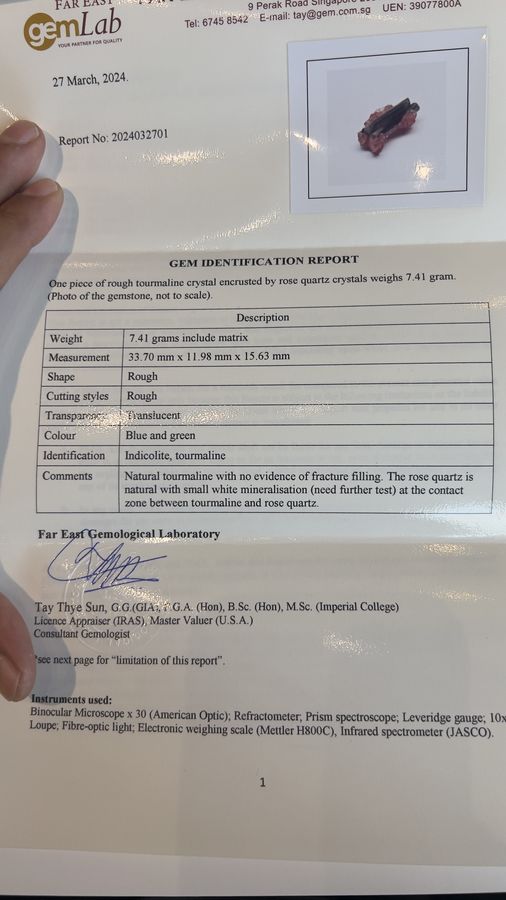
|
| Description: |
|
| Viewed: |
15313 Time(s) |
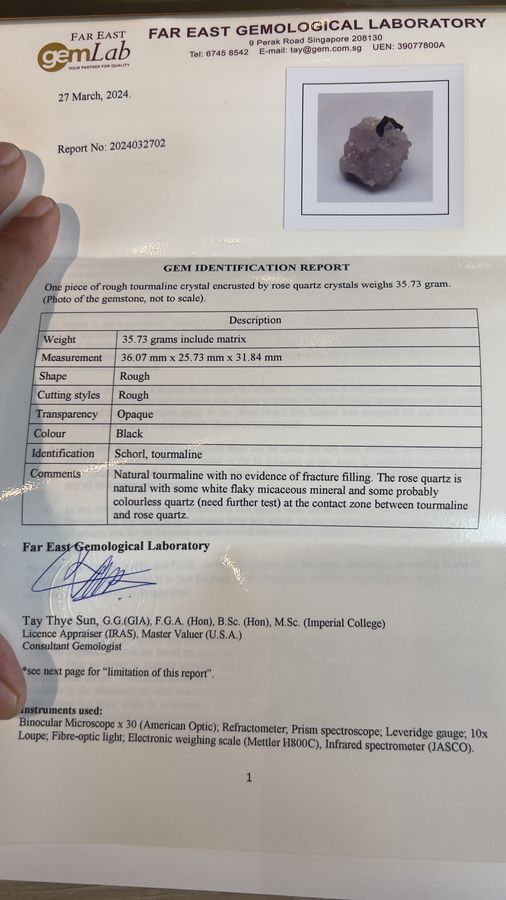
|
| Description: |
|
| Viewed: |
15326 Time(s) |
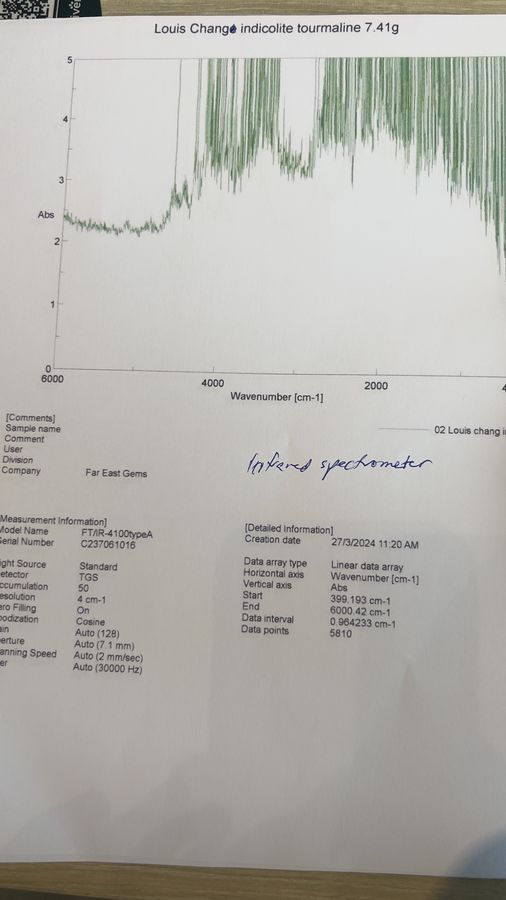
|
| Description: |
|
| Viewed: |
15305 Time(s) |
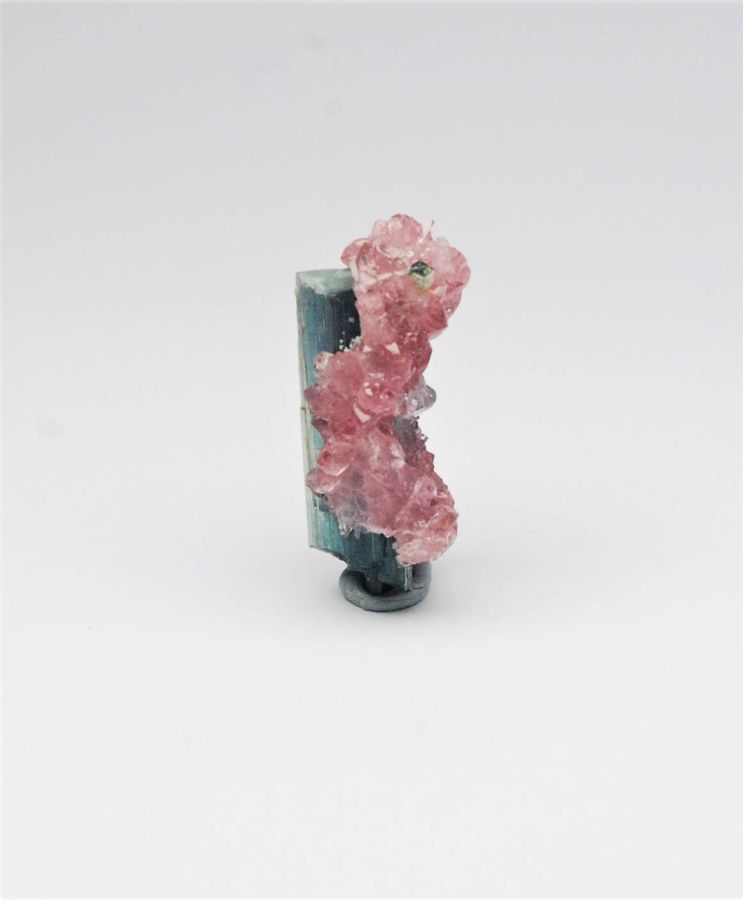
|
| Description: |
|
| Viewed: |
15355 Time(s) |
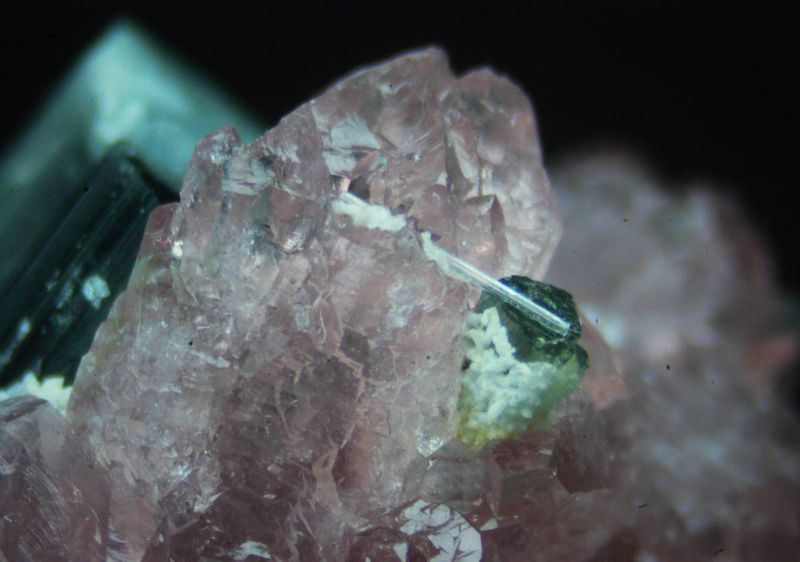
|
| Description: |
|
| Viewed: |
15323 Time(s) |
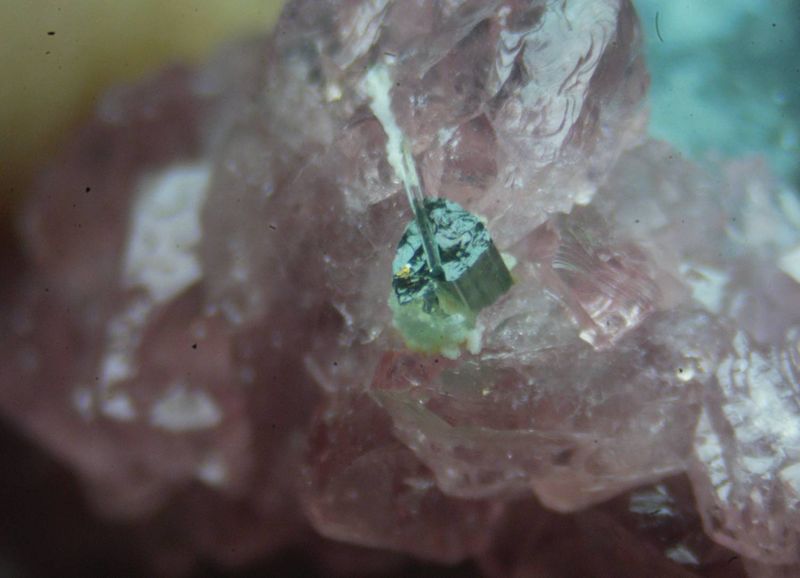
|
| Description: |
|
| Viewed: |
15326 Time(s) |
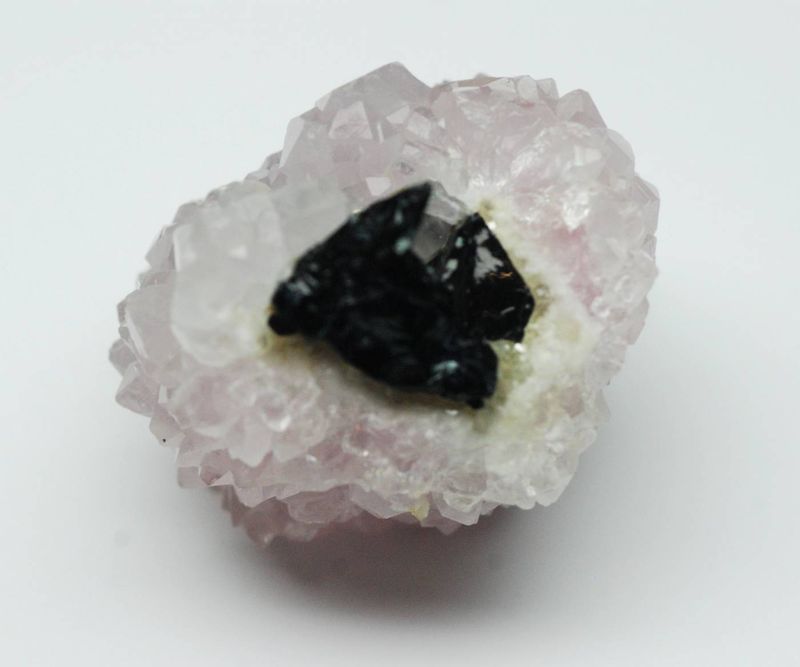
|
|
|
| Back to top |
|
 |
Josele

Joined: 10 Apr 2012
Posts: 410
Location: Tarifa, Spain



|
 Posted: Mar 29, 2024 09:43 Post subject: Re: Trying to find information on rose/pink quartz and tourmaline associations. Posted: Mar 29, 2024 09:43 Post subject: Re: Trying to find information on rose/pink quartz and tourmaline associations. |
|
|
Indicolite and rose quartz are well known in Parun pegmatite field, Nuristan, Afghanistan, although rarely seen together.
https://www.mindat.org/loc-9019.html
|
|
| Back to top |
|
 |
Amir Akhavan
Joined: 01 Dec 2009
Posts: 95
Location: Hamburg


|
 Posted: Mar 30, 2024 09:14 Post subject: Re: Trying to find information on rose/pink quartz and tourmaline associations. Posted: Mar 30, 2024 09:14 Post subject: Re: Trying to find information on rose/pink quartz and tourmaline associations. |
|
|
I see no reason to doubt these are natural, but the gemlab tests are meaningless with respect to the identity of the material.
Two diagnostic features of pink quartz are UV and heat sensitivity (rose quartz isn't affected by these). It is highly UV sensitive, more than any other quartz variety.
If it is not UV sensitive, it is some new material, colored by either inclusions or impurities (and of course, it is obviously not rose quartz, no test needed). If you want positive identification, you need to do EPR (phosphorous/aluminium color centers).
_________________
Amir C. Akhavan, Hamburg, Germany |
|
| Back to top |
|
 |
|





